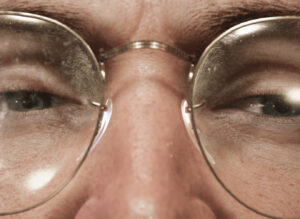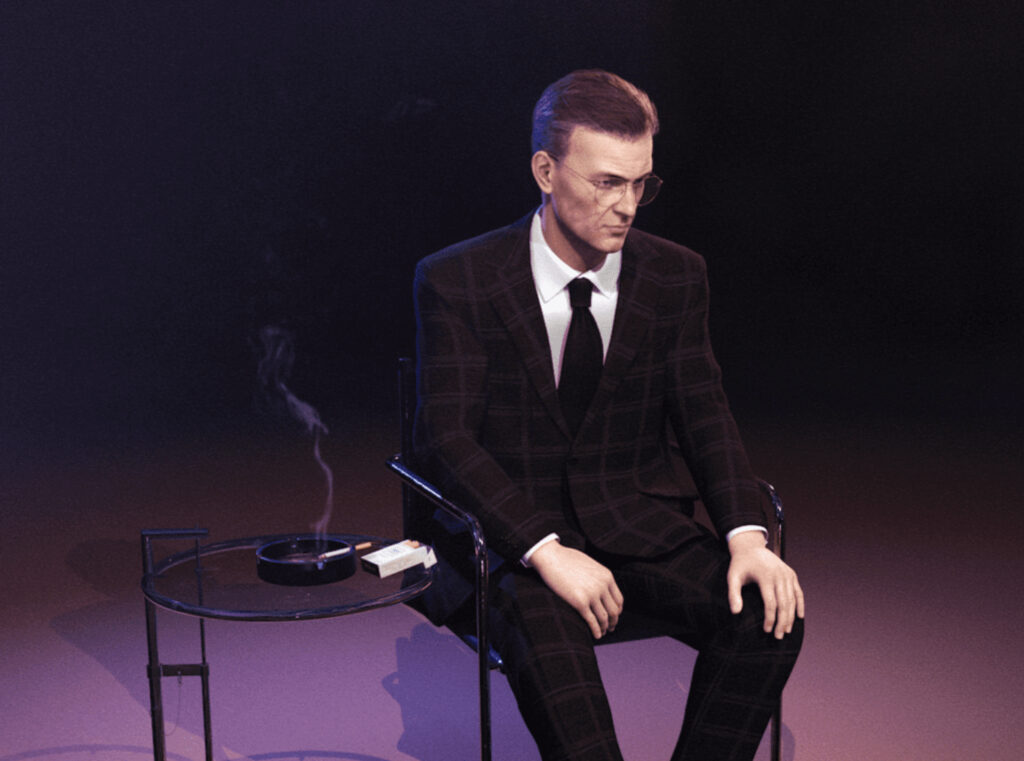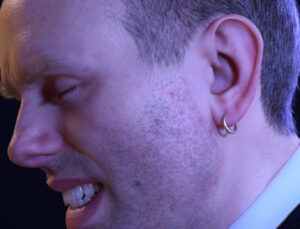
In an art world that often celebrates tangible materials, Ed Atkins creates with pixels, soundscapes, and code. His medium is the screen—his brushstroke, animation. Best known for his hyper-realistic, computer-generated videos, Atkins has carved out a distinct place in contemporary art by exploring the emotional void within our increasingly digital existence. His work doesn’t merely use technology—it interrogates it, turning the artificial into a mirror for our most human flaws.
Atkins’ creative output is marked by contradiction: visuals that are eerily lifelike paired with monologues that are achingly emotional, yet voiced by figures that can never truly feel. This gap—between the real and the rendered, the intimate and the inauthentic—is where his work lives. In doing so, Atkins engenders a new kind of embodiment to art: not through physical presence, but through emotional dissonance.
The Look and Feel of Absence
Atkins’ videos are stunning at first glance—visually rich, meticulously rendered, and hauntingly precise. The central figures in his pieces are digital avatars: bald, pale-skinned men often bearing the artist’s own voice and mannerisms. They are hyper-detailed, down to the pores, teeth, and moisture in their eyes, yet they occupy a world that never feels truly alive.
In works like Raking Light (2021) and Even Pricks (2013), these avatars speak directly to the viewer in fractured, poetic language. Their delivery ranges from deadpan to desperate, touching on loneliness, fear, regret, and the need for connection. But there’s always a catch: these aren’t real people. They’re code. Their emotions, however well-scripted, are simulated. This tension—between visual realism and emotional impossibility—is central to Atkins’ work.
He uses this artificiality deliberately, not as a gimmick, but as a commentary on the limitations of digital communication and the estrangement baked into our modern tools. In an age of filtered faces and curated online identities, his avatars stand as exaggerated versions of our virtual selves—full of expression, but ultimately empty.
Language as Texture
One of Atkins’ most striking tools isn’t visual—it’s linguistic. His writing, often dense and poetic, serves as the emotional backbone of his videos. The monologues, delivered in his own voice, are filled with digressions, contradictions, and emotional lurches. They sound like diary entries performed on a stage where no one is watching—or perhaps where no one truly exists.
This use of language adds a raw layer of humanity to the glossy surface of the animation. It’s not just that the avatars speak; it’s how they speak. They stumble, they sigh, they get distracted. Their words feel lived-in and vulnerable, contrasting with their perfectly rendered exteriors. In this way, Atkins uses voice not just as a narrative device but as a textural one, layering human fallibility over machine precision.
In a broader sense, this emphasis on text and voice reflects Atkins’ concern with how meaning is conveyed—and often lost—in digital contexts. Just as emojis, GIFs, and memes now stand in for full expressions of feeling, his work shows how easily depth is flattened by the medium we use to deliver it.
The Body Without the Body
Atkins’ avatars are meant to provoke unease. They are visually “complete,” yet something always feels missing. Their gestures are a little too smooth. Their eyes linger a beat too long. They evoke the uncanny valley, that unsettling sensation we get when something looks almost human—but not quite.
This tension speaks to a deeper question in Atkins’ work: what does it mean to represent the human body in a disembodied age? His figures are full of physical detail, but they can’t touch, sweat, or age. They are trapped in a loop of endless digital performance, voicing real feelings without the bodies to back them up.
In this way, Atkins critiques not only the aesthetics of digital media but the culture that surrounds it. We’ve built systems—social media, video conferencing, virtual avatars—that prioritize representation over presence. In response, his work insists on the absence beneath the image, the body that isn’t there, the feeling that can’t be felt through the screen.
Grief, Longing, and the Digital Condition
Themes of loss and longing run through much of Atkins’ work. While his characters are not human, they often seem to mourn like one. They grieve relationships, lost time, missed connections. And because they are simulations, their grief feels especially hollow—like a performance of emotion with no lived experience behind it.
Yet that hollowness is the point. Atkins isn’t trying to trick us into believing his avatars are real. He wants us to feel the gap between the real and the virtual. In doing so, he forces us to consider how much of our own emotional lives are now mediated through technology.
This is particularly potent in a post-pandemic world, where much of our communication has shifted online. Zoom calls, virtual classrooms, digital memorials—these are now part of our emotional landscape. Atkins was exploring these issues long before they became universal, but they resonate more deeply than ever. His work feels prophetic, not because it predicts the future, but because it shows us what we’re already living through.
Beyond the Screen: Installation and Immersion
While much of Atkins’ work exists on screens, he often presents his videos in immersive gallery settings. The sound is loud, the visuals are large, and the environment is carefully designed to heighten the viewer’s sense of disconnection. You’re not watching passively—you’re engulfed.
In some installations, multiple screens show different perspectives or repeat the same figure at slightly off-kilter intervals, adding to the sense of psychological fragmentation. The effect is disorienting, which is entirely the point. Atkins uses scale and repetition to overwhelm the viewer, drawing attention to the artificial nature of the experience. You’re surrounded by bodies that don’t exist, speaking truths they can’t live.
This use of space transforms his videos from solitary media experiences into something more physical and collective. It’s an ironic gesture, really: using technology to force presence. But it works. His installations don’t just show the digital divide—they make you feel it in your gut.
The Art of Emotional Simulation
Ed Atkins isn’t a digital artist in the traditional sense. He’s not obsessed with software, futurism, or technological utopias. Instead, his work uses digital tools to probe very analog emotions: grief, shame, yearning, failure. He doesn’t celebrate technology—he questions its limits. He uses the artificial to expose the real.
In an era dominated by image culture and digital proxies, Atkins reminds us of what’s missing: the touch, the presence, the body. His avatars perform emotion, but they can never quite feel it. And in watching them, we confront how often we do the same.
Atkins’ work leaves you with a kind of emotional hangover—not because it tries to manipulate, but because it insists on the absence we try to ignore. His creativity lies not in crafting perfect visuals, but in revealing what those visuals can’t hold. In a time when we are more connected than ever yet feel more detached, Ed Atkins embodies the creative tension of our age. And in doing so, he creates art that speaks—quietly, eerily, powerfully—to the digital heart of modern life.
No comments yet.









